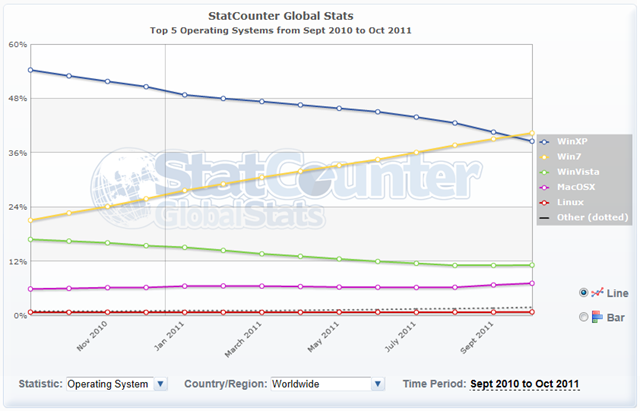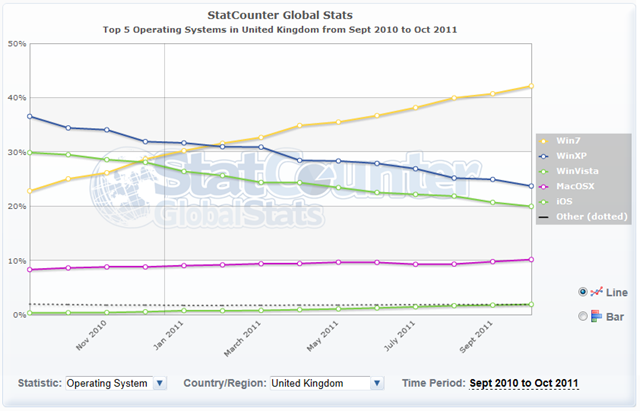T-900 Days Until Support for Windows XP Ends
The 20th October 2011 was another milestone as we look towards End of Support (EoS) for Windows XP. Checking my countdown gadget tells me that we’re now at only 894 days until the XP support switch is flicked to off, and no support means Windows XP becomes a significant risk for your business. After April 8th 2014 there will be no new security updates, non-security hotfixes, free or paid assisted support options or online technical content updates.
It’s hard to believe it, but ten years have passed since Windows XP was first launched, and the workplace has changed quite a bit. Today’s businesses, big or small, face trends that were not mainstream a decade ago – highly mobile and distributed workforces, new compliance regulations, more consumer devices in the workplace, and an increased emphasis on operational efficiency. The modern workplace needs modern technology to support and embrace all these changes.
There’s no denying that XP was a massive step forward and a great OS in it’s own time. It made working on a PC more user friendly and fun, adding support for Wireless Internet and a new UI. However you don’t start to realise how much has changed since then until you look at what we didn’t have. When XP was first released nobody was talking about it on Facebook, that didn’t exist until 2004. We were still 6 years away from the first iPhone, the first Xbox was yet to make it to market and tablet computers were somewhat different to the devices that are increasingly common today.
To further put things into perspective, using XP today is akin to trying to synchronise your iPhone 3G with Windows 98 or stream from your Windows 95 PC to your shiny new Xbox 360.
April 2014 might sound like an awful long way away, but if you think about the amount of time your Windows 7 migration could take from end to end, there really is no time to waste. Working from their own projected timelines, Gartner have noted that it would be “dangerous for organizations now running XP to attempt to skip Windows 7 and move directly to Windows 8”. Indeed, they have been saying for over a year that organisations should look to have migrated off of Windows XP by the end of 2012, and the most recent statistics from StatCounter seem to show that people have been heeding their warning.

OS Share Worldwide. Source: StatCounter

OS Share UK. Source: StatCounter
This October, for the first time, the worldwide share of PCs running Windows 7 overtook that of those running Windows XP and the trend shows no sign of slowing. This is nothing new in the UK though, where Windows 7 share has outstripped that of XP for well over a year.
It’s all well and good singing the praises of Windows 7, and it is widely viewed as the superior OS, but we’re also well aware that it’s not always simple making the switch. This is especially true for many IT Pros working in complex organisations with a vast number of legacy applications. To make sure you and your business aren’t left behind, we have a whole host of great resources available to give you a helping hand and I’ve listed a few of them below for you to check out.
- Windows XP SP3 & Office 2003 End of Support Page
A brand new page on the Microsoft website covering EoS - SpringBoard Series for Windows 7
A whole host of information on Windows 7 Piloting, Deployment and Management - Windows 7 Deployment Learning Portal
Test your knowledge of Windows 7 Deployment - Microsoft Deployment Toolkit (MDT)
Microsoft’s automated desktop and server deployment toolkit - Microsoft Desktop Optimization Pack (MDOP)
The recently released 2011 R2 version of this suite of products includes BitLocker Administration and Monitoring tools as well as a whole host of other solutions to help streamline desktop deployment, management, and support - The TechNet UK ‘Save Sam’ Windows 7 Advice Competition
Sam’s received loads of great advice that might be helpful for you too. The videos so far can be found here and here